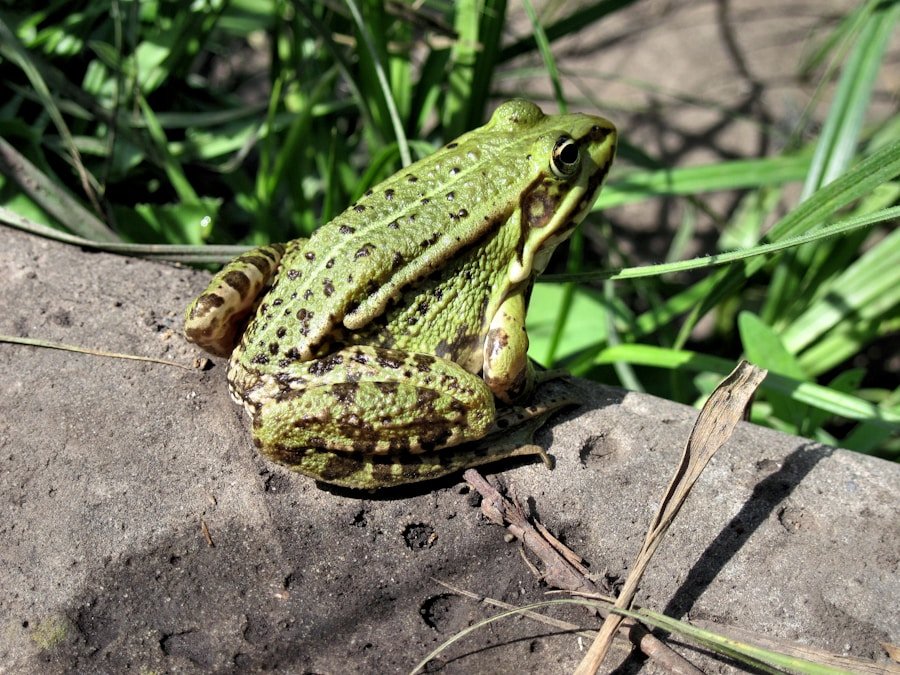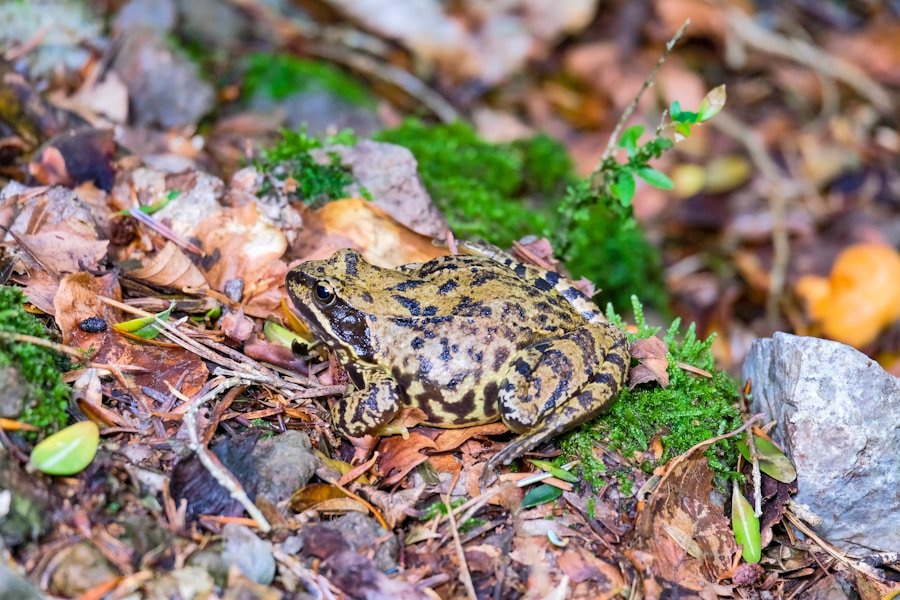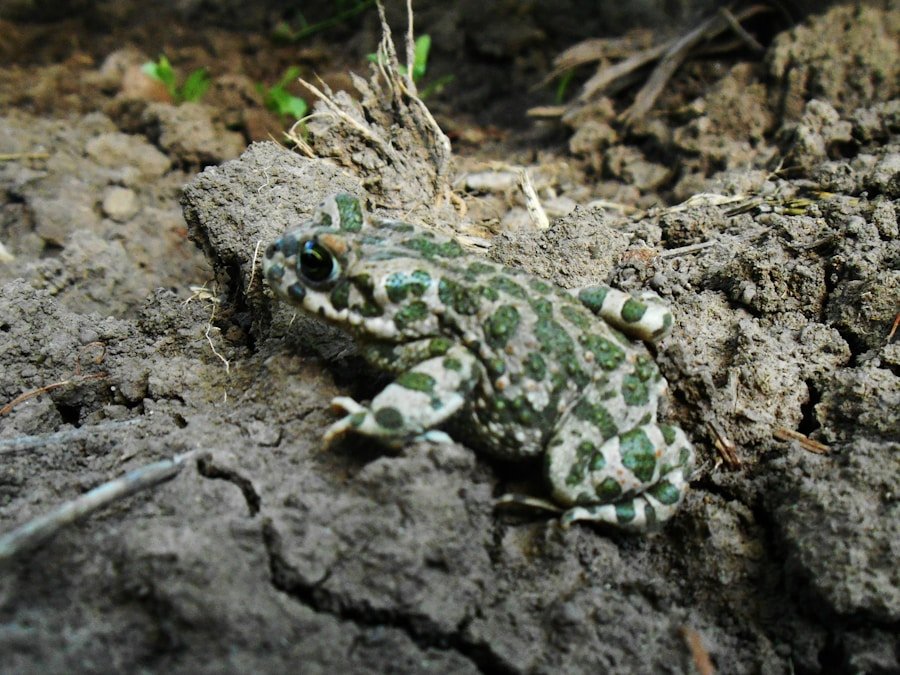Table of Contents
Frogs are remarkable amphibians that inhabit a diverse range of environments across the globe. They can be found on every continent except Antarctica, showcasing their adaptability to various climates and ecosystems. Frogs thrive in moist habitats, such as rainforests, wetlands, ponds, and streams, where they can easily access water for breeding and hydration.
Some species have even adapted to arid environments, utilizing temporary water sources during the rainy season. The Amazon rainforest, for instance, is home to an astonishing variety of frog species, each uniquely adapted to its specific niche within this biodiverse ecosystem. The distribution of frogs is not uniform; it varies significantly based on environmental factors and geographical barriers.
For example, the vibrant poison dart frogs are primarily found in Central and South America, while the common frog is widespread across Europe and parts of Asia. The unique adaptations of frogs to their habitats have led to a rich tapestry of species, each with distinct characteristics that reflect their surroundings. As climate change and habitat destruction continue to threaten these environments, understanding the habitat and distribution of frogs becomes increasingly crucial for their conservation. Sure, here is the sentence with the link:
I love learning about different types of animals, especially the unique characteristics of the Frog.
Key Takeaways
- The habitat and distribution of the species is primarily in tropical rainforests, but they can also be found in other types of forests and even urban areas.
- The physical characteristics of the species include a vibrant plumage, a long tail, and a strong beak for foraging.
- The diet and feeding behavior of the species consists of fruits, insects, and small vertebrates, and they are known for their agile and acrobatic feeding habits.
- The reproduction and life cycle of the species involves courtship displays, nest building, and the raising of young chicks by both parents.
- Predators and defense mechanisms of the species include birds of prey, snakes, and mammals, and they use camouflage, alarm calls, and mobbing behavior to protect themselves.
Physical Characteristics
Streamlined Bodies for Efficient Locomotion
Generally, they possess a smooth, moist skin that allows for efficient respiration and hydration. Their bodies are typically streamlined, aiding in swimming and jumping—two essential modes of locomotion for these amphibians.
Unique Limbs and Coloration
Frogs have long hind legs that are well-developed for jumping, while their forelimbs are shorter and often used for support during movement. The coloration of frogs can range from vibrant hues to more muted tones, often serving as camouflage or warning signals to potential predators.
For instance, the red-eyed tree frog is renowned for its bright green body and striking red eyes, which can startle predators. Conversely, the Arctic frog has adapted to its cold environment with a body that can withstand freezing temperatures. These physical adaptations not only enhance their survival but also contribute to the incredible diversity found within the amphibian world.
Diet and Feeding Behavior

Frogs are primarily carnivorous creatures, with their diet consisting mainly of insects and other small invertebrates. Their feeding behavior is quite fascinating; they use their long, sticky tongues to catch prey with remarkable speed and precision. Depending on the species, frogs may also consume small fish, worms, or even other frogs.
The size of their prey often correlates with the size of the frog itself; larger species can tackle bigger meals, while smaller frogs tend to stick to smaller insects. Feeding habits can vary significantly among different frog species based on their habitat and available food sources. For example, some tree frogs may hunt at night when insects are more active, while others may forage during the day.
Frogs also play a vital role in their ecosystems as both predators and prey; they help control insect populations while serving as a food source for various animals, including birds, snakes, and mammals. Understanding their dietary needs is essential for those who keep frogs as pets or study them in the wild.
Reproduction and Life Cycle
| Species | Reproduction Method | Life Cycle |
|---|---|---|
| Humans | Sexual reproduction | Approximately 79 years |
| Salmon | Spawning | 3-7 years |
| Butterflies | Metamorphosis | 2-4 weeks |
| Oak Trees | Seeds and pollination | 50-100 years |
Frog reproduction is a captivating process that typically involves external fertilization. Most species engage in a mating ritual during which males call out to attract females. These calls can vary widely in pitch and duration, often reflecting the species’ unique characteristics.
Once a female selects a mate, she lays her eggs in water, where the male fertilizes them externally. The number of eggs laid can range from a few dozen to several thousand, depending on the species. The life cycle of a frog is marked by distinct stages: egg, tadpole, metamorphosis, and adult frog.
After hatching from eggs, tadpoles emerge as aquatic larvae equipped with gills for breathing underwater. They primarily feed on algae and plant matter during this stage. As they grow, tadpoles undergo metamorphosis—developing legs, absorbing their tails, and transitioning to lungs for breathing air.
This transformation is a remarkable example of nature’s adaptability and resilience, allowing frogs to thrive in both aquatic and terrestrial environments.
Predators and Defense Mechanisms
Frogs face numerous threats in the wild from various predators, including birds, snakes, mammals, and even larger amphibians. To survive these dangers, frogs have developed an array of defense mechanisms that enhance their chances of survival. One common strategy is camouflage; many frogs possess skin colors and patterns that blend seamlessly into their surroundings, making it difficult for predators to spot them.
This natural form of concealment is particularly effective in dense vegetation or murky waters. In addition to camouflage, some frog species have evolved toxic skin secretions as a defense mechanism against predation. For instance, poison dart frogs produce potent toxins that can deter potential threats.
These toxins often serve as a warning signal to predators about the frog’s unpalatability. Interestingly, some species also employ behavioral tactics such as playing dead or making sudden movements to confuse or startle predators. These adaptations highlight the intricate balance between predator and prey in the natural world.
Communication and Vocalizations

Vocalizations During Breeding Season
Male frogs are particularly vocal during the breeding season when they call out to attract females. Each species has its unique call—some may croak loudly while others produce soft chirps or whistles.
Purposes of Vocalizations
These calls serve multiple purposes: they not only help males establish territory but also signal their fitness to potential mates. Interestingly, vocalizations can vary based on environmental factors such as temperature and humidity. Frogs may adjust their calls in response to background noise or competition from other males.
Complex Vocal Patterns
Additionally, some species have developed complex vocal patterns that convey specific messages or warnings within their social groups. Understanding these vocalizations provides valuable insights into frog behavior and social dynamics.
Human Interaction and Conservation Efforts
Human interaction has significantly impacted frog populations worldwide, leading to both positive and negative consequences. Urbanization, habitat destruction, pollution, and climate change have all contributed to declining frog numbers in many regions. As sensitive indicators of environmental health, frogs serve as vital barometers for ecosystem changes; their decline often signals broader ecological issues that require attention.
Conservation efforts aimed at protecting frog populations have gained momentum in recent years. Organizations worldwide are working tirelessly to raise awareness about the importance of amphibian conservation and implement strategies to safeguard their habitats. Initiatives include habitat restoration projects, captive breeding programs for endangered species, and public education campaigns aimed at fostering appreciation for these remarkable creatures.
By promoting sustainable practices and protecting natural habitats, we can help ensure a brighter future for frogs and the ecosystems they inhabit.
Fun Facts and Trivia
Frogs are not only fascinating creatures but also come with a plethora of fun facts that highlight their uniqueness! Did you know that some frogs can jump over 20 times their body length? This incredible ability allows them to evade predators swiftly and navigate through their environments with ease.
Additionally, certain species of frogs can change color based on their surroundings or emotional state—a remarkable adaptation that aids in camouflage.
The wood frog has developed an extraordinary ability to tolerate freezing temperatures by entering a state of suspended animation until warmer weather returns.
This adaptation showcases the resilience of frogs in extreme conditions. With over 7,000 known species worldwide, each with its own quirks and characteristics, frogs continue to captivate researchers and nature enthusiasts alike. In conclusion, frogs are extraordinary amphibians that play vital roles in our ecosystems while showcasing remarkable adaptations for survival.
From their diverse habitats to their unique physical traits and fascinating life cycles, these creatures offer endless opportunities for exploration and discovery. As we continue to learn more about frogs and their importance in our world, it becomes increasingly essential to protect them for future generations to enjoy.
If you are interested in learning more about caring for pets, you may want to check out this article on Budgerigar: The Charming Budgie as a Pet. Just like the Leopard Frog, budgerigars are popular pets that require specific care and attention to thrive in a home environment. This article provides a comprehensive guide on how to care for these charming birds and ensure they live a happy and healthy life.
FAQs
What is a Leopard Frog?
A Leopard Frog is a species of frog that belongs to the genus Lithobates. They are known for their distinctive spotted patterns, which resemble the spots of a leopard, hence the name.
Where are Leopard Frogs found?
Leopard Frogs are native to North America and can be found in a variety of habitats, including wetlands, marshes, ponds, and streams. They are particularly common in the eastern United States and parts of Canada.
What do Leopard Frogs eat?
Leopard Frogs are carnivorous and primarily feed on insects, such as flies, mosquitoes, and beetles. They are also known to consume small invertebrates and occasionally small vertebrates.
What are the predators of Leopard Frogs?
Leopard Frogs are preyed upon by a variety of animals, including birds, snakes, raccoons, and larger frogs. They rely on their camouflage and ability to jump quickly to evade predators.
Are Leopard Frogs endangered?
Some species of Leopard Frogs are considered to be at risk due to habitat loss, pollution, and disease. However, the overall status of Leopard Frogs varies depending on the specific species and location.


